Lacunae, DIY, and gestalts
2021 in review
Dear friends,
I’m starting to write to you now from the cheapest hotel I could find in downtown Buffalo, home of the only passport renewal appointment east of the Mississippi in the week prior to my Christmas-day trip to Brazil. The subsequent passes of this letter were made from Itamambuca and various points around São Paulo’s Zona Oeste. This was my first time in the country in almost four years and arriving had the sensation of re-encountering a lost part of my soul. A longing deep in my subconscious for what I can only describe as levity, something that I’ve searched hard for these past years, was suddenly whole. My only other flings with such a levity were in literature: Bolaño’s Savage Detectives and Calvino’s memo for lightness. It’s antagonistic to the over-intellectualized existence I’ve led since starting college in the US, an empowering but unbalanced extension of man that leads me to these reflections. Ever since last year’s edition, I’ve thought of what I would write this year. I promised myself to not plan it out; to wait patiently for the end of the year and, off the top of my head, leak out what remained from the deluge of daily life. An evening alone in a dingy western New York hotel, now in the last ten days of the year, feels like an appropriate moment to pause the clock and start to look back.
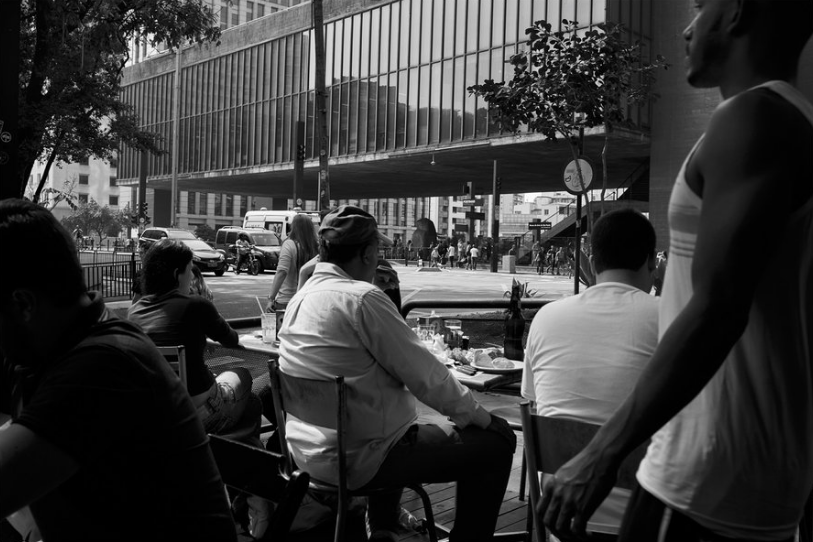
Now that I am no longer a student, these lacunae which permit understanding have been central to how I’ve attempted to coordinate my routine. I can no longer answer the interrogation of “what are you doing” with the socially acceptable variants of stalling: undergrad, grad school, or traveling. Nowadays, I just am. I have to trust that what I deem valuable will cohere into a meaningful body of work. However, a pathological desire for a predestined path (in fact, the only part I envy from the consulting-MBA-consulting-family-death cycle many of my peers have blindly fallen into) often precludes me from just being.
This clarity can only come in retrospect, a concept that I re-encountered in Levi-Strauss’s Tristes Tropiques, a memoir of his ethnographic travels, written two decades in retrospect. He compares the gap between experience and understanding to a pair of opposing cliffs, separated by a vast sea. As time passes, the erosion of forgetfulness causes the cliffs to crumble, increasing the distance to the experience and the despair of disunity. With enough time, however, the sediments from the cliffs accumulate onto the ocean floor and coalesce into a path which emerges from the depths as a small isthmus permitting retrospection with clarity. Though more poetic, this is nothing more than my oft-quoted “connect the dots” anecdote from Steve Jobs, a little kernel of truth which I will cling to like a raft until such an isthmus arises.
These interludes, however, are under attack. Entertainment and ease have become dogma. Any lacuna of time is polluted by the incessant pull of the phone and social media. I struggle to sit at a table alone or to put down a book and just think of what I’ve read. If time lets the isthmus build up, social media builds up an undercurrent which sweeps you away towards the mean of whatever the feed has deemed you to be. (I’ve tried to free myself of devices, but as I wrote, Luddism comes with costs.) The reaction is the pathological attempt to organize the deluge: I, for one, write lists. Lists of books to read, books I have read, movies I’ve watched, people I want to meet, neighborhoods I need to roam, and projects I haven’t finished… When I’m overwhelmed by the necessities of daily life, I write out what I have to do. They’re not actionable nor do they afford me mental peace. They’re anxiolytics, offloading the cognitive load of optionality on to the page. It has some relationship to the “personal wiki” movement, built on the premise that, if you densely annotate everything you think, read, and experience, a structure will emerge. It’s the opposite of Levi-Strauss’ structure by forgetting. I’ve become Funes the Scribe, lacking his preternatural gift for memory. Thus, the importance of patience in writing this email–attempting synthesis at a distance.
Unlike the Westerlies’ travels of 2020, this past year I firmly situated myself as a resident of New York. Along with the liberties of living in a former factory (drill into any wall, build mezzanines at will, 15ft ceilings), comes the responsibility of maintaining one’s space. Together with Rosie, we built a kitchen island out of plywood and concrete. I did my first excursion into plumbing to install a sink, dishwasher, and fridge (involving a misplaced extension, leading to a dysfunctional valve, and a waterfall which I tried to suppress by sticking my thumb into the scalding pipe as Rosie ran to turn off the whole floor’s water supply). I particularly enjoyed the morning walks to the local hardware store where I would not only get the parts, but also advice on how to get everything into the right place. During the fall rainstorms in NYC, I had a memorable scare as every seam between the hardwood planks of our ceilings began to condense and then drip moisture. I ran up to the roof and stepped into a 10-inch-deep lake of accumulated water, product of a clogged drain. With a group of neighbors, wielding various plastic containers, we cleared out some water and got the drain unclogged.
My decision to adopt DIY living spaces extended into the office. With XY,1 a coworker, I helped set up Reduct‘s shop within Soft Surplus, a cooperative space for artists. With 2x2 lumber as a fundamental unit, we built a series of floating desks, inspired by Ken Isaacs’ matrices. In his 70s instructional “How to Build Your Own Living Structures,” Issacs laments how we’ve lost an ability to concentrate and enter a steady inner rhythm due to the pulsations of modern life. He encourages focusing on simple tools, writing: “You will end by being able to do things with the tool which will surprise & amaze you. You don’t have to be a zen master to recognize that this will result in some pretty peachy changes in your relationship with self & thus with the rest of the universe.” Indeed, after a first desk, I couldn’t stop making more furniture.
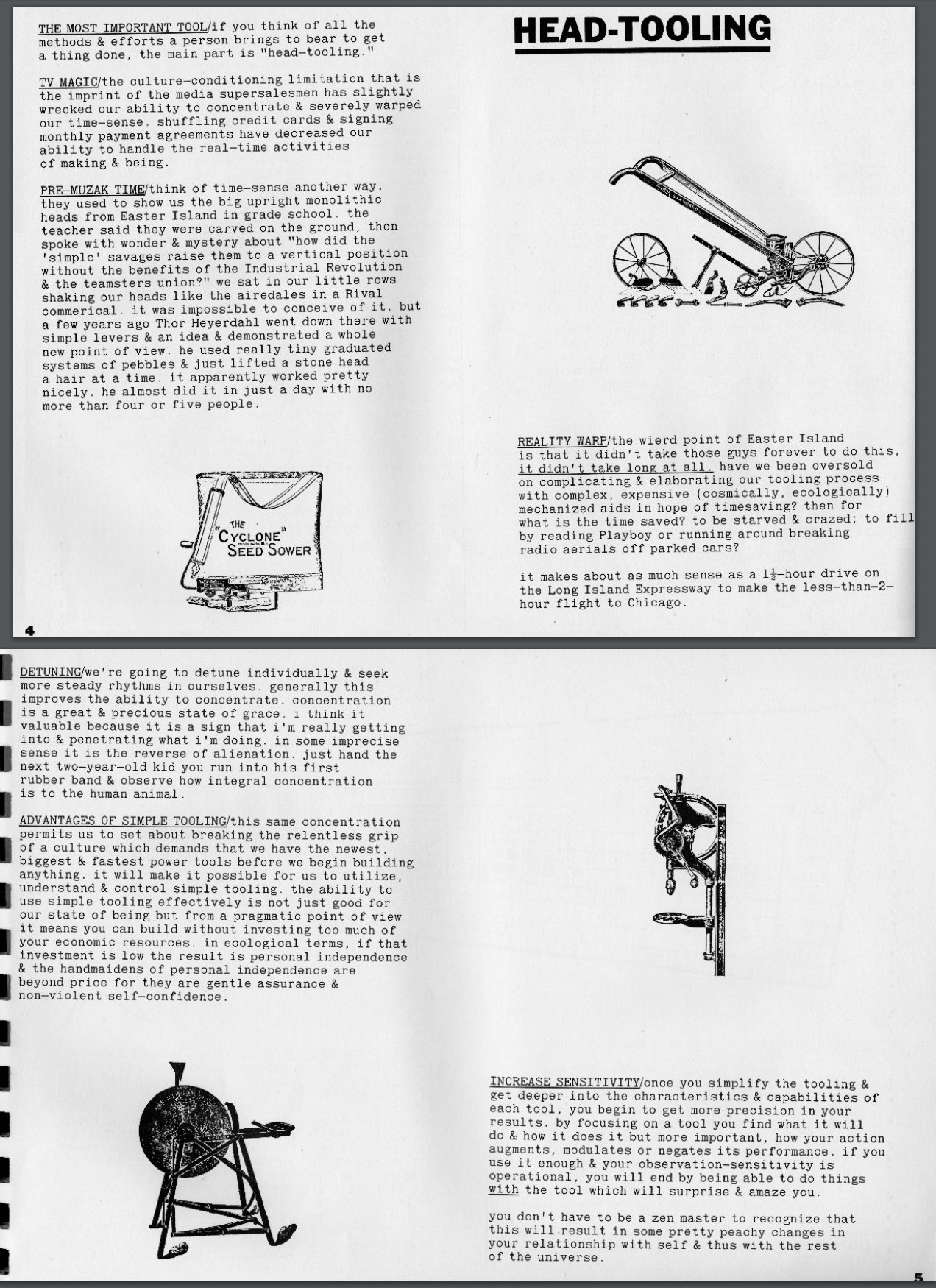
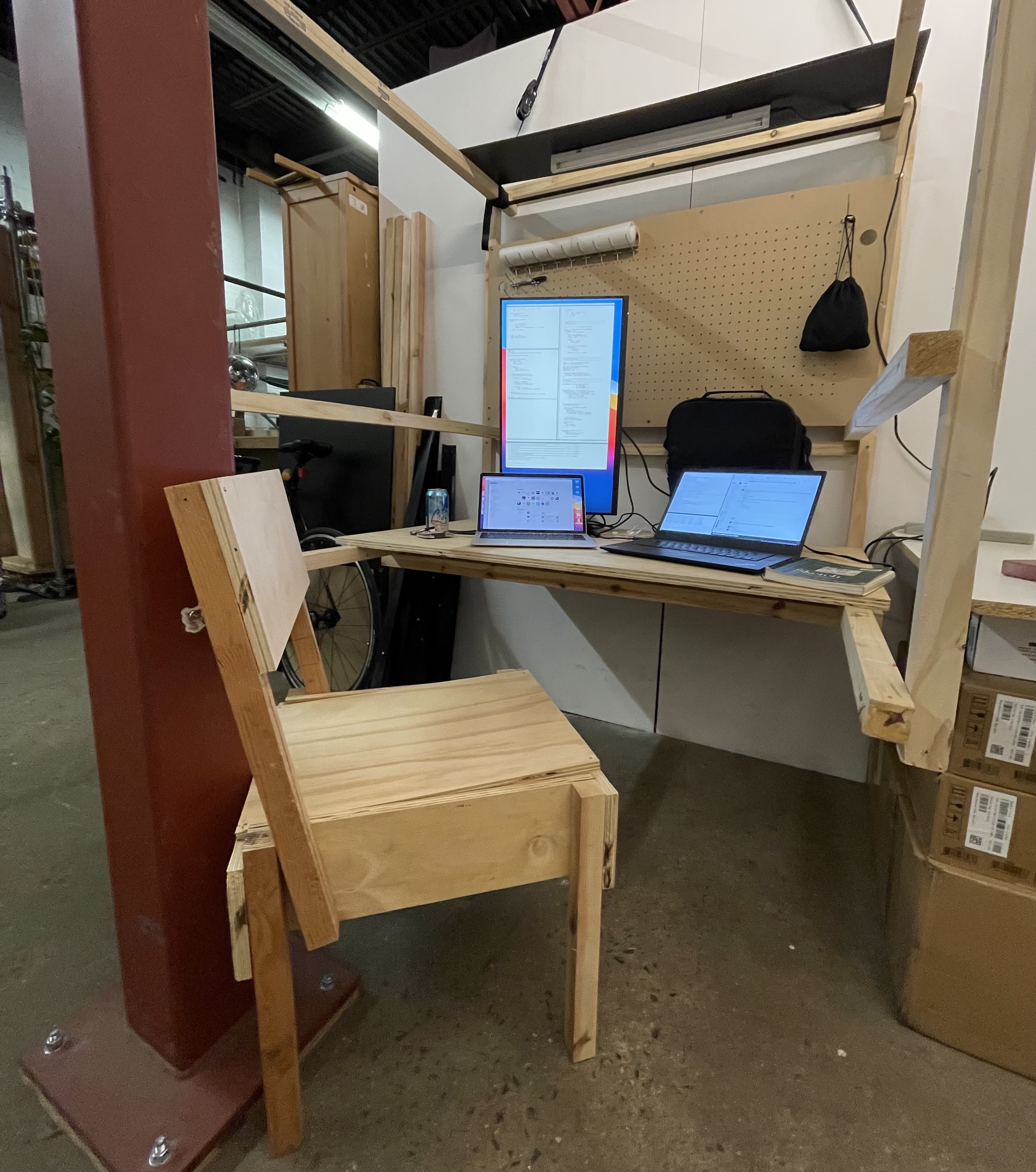

In Autoprogettazione, Enzo Mari similarly discusses how, in making your own furniture, you begin to perceive the artifacts around you, not as stable stagings of a fictional world, but as malleable parts of your reality. This radical change in perception affords one agency. Inspired, I used the leftovers from the desks to make one of Mari’s Sedia designs, forming the 70s radical DIY office setup. I felt the reshaping of my eye when I then set out to make a lounge chair and found a design that naturally followed from the Sedia, solving for the soft bottom and back rest with tensioned fabric. This process of desiring a new chair, re-purposing existing materials and techniques (particularly, the Sedia’s structural base), to then alter the material world, feels like the kind of DIY that truly increases one’s belief in their agency to create. Not following instructions online. Not reading theory about social change. Action and information in a balanced ratio of one.2 This was the meaning of John Cage’s “The only rule is work. … It is the people who do all the work all the time who eventually catch on to things.”
At a cadence of roughly a week every two months I’ve been able to retreat to the wrung yellows, greens, and blues of California for work trips. These work-weeks with the SF-based part of Reduct are nestled between two friend-filled weekends. This year they fortuitously coincided with Lucas’ Yosemite campsite reservation, Pedro’s birthday, and a Brazilian barbecue, significantly lessening the distance I may have felt post-college. I wrote about these Dirac comb friendships in the Luddite essay: sporadic, but committed encounters leading to deeper connection than the continuous stream of memes and gossip from text messages and group chats. “I’m in town for 48 hours, I’ll be back in 2 months” gives urgency to an encounter by downgrading any other afazer: Now, I’m with you. I felt the same effect taking my Argentinian cousin on a Big Sur road trip. Sitting together for eight hours in a car allows a conversation to grow naturally. Silences aren’t awkward, they allow thoughts to brew.
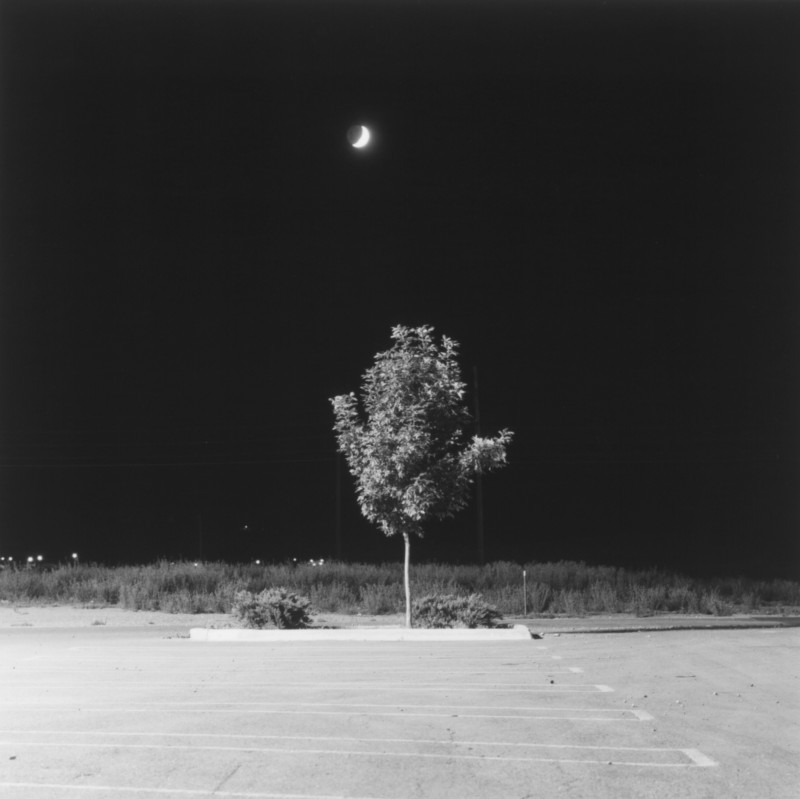
During that Yosemite trip, with a notable moment of transcendence on the Mist Trail, facing a full rain-circle, I kept thinking of Georg Simmel’s The Metropolis and Rural Life. He maps the Dirac comb phenomenon onto a rural-urban axis. For the individual, the metropolis is a place of fleeting overstimulation. Further, the city-as-organism grows independent from its members. To attenuate the stimulus, a generalized blasé emerges, only accentuating the conception of self as inessential. Personal identity can only emerge through attention-grabbing signals (e.g., public lists of books that one has read, pathetic in retrospect), yelling “I am here”. Simmel contrasts this to rural life, where there is space for one’s emotions and, in aggregate, personality to emanate from the self. One interacts with few people, repeatedly, for long periods of time. One’s uniqueness and irreplaceability become obvious, attenuating the neuroticism. NYC has not helped in this dimension, however I’ve begun to slowly retreat from social media. This email attempts to be a slower emanation of the self. Pardon the length.
These work trips have been a part of working with Reduct. I was curious about the “media for thought” space, not because I care about “productivity” or “encouraging rationality,” but because it was the only space where I found technologists who deep down were humanists. They read Illich, McLuhan, Papert, Ong, Arnheim, and Benjamin. They built not tools for instrumental uses, but mediums in which a user could think and create. After a great interview with Rob Ochshorn, whose split background between Alan Kay’s CDG lab with Bret Victor and the European avant-garde art scene evinced his commitment to questions of this humanist nature, I thought Reduct would be a great place to begin to answer some media-theoretic inquiries. I think of the company as built around the medium of timed-text, building tools that attempt to change our relationship to information by uniting oral and written cultures. The largest project I’ve been working on is a to-be-released spatial canvas for video.
The central tension in my professional work has been my desire for the DIY-induced sensation of power that wielding tools effectively gives and the worry that technology is ultimately about ease, about reducing the need for beautiful manipulation of the world to the simple click of a button. I first articulated this as “Tools for creative expression reify particular expressive patterns, rendering them commodities. You can build tools for content creators, but not for artists.” Hidden in here is an implicit aesthetic theory and ethic for tool-making that I struggle to articulate but may be able to get across by accreting a series of opinions into a coherent picture:
I’ve longed been fascinated by experiencing expert manipulation of tools: James Turrell’s sculpting with light, Jacques Pepin de-boning a chicken, or Messi dribbling half a field to score a last minute hat trick against Brazil. These artists enter a state of flow in which they forget the tools at hand (here, McLuhan’s extensions of man become clear), making the gap from thought to production as short as a reflex arc. What is perceived aesthetically is not just the artifact in and of itself, but also one’s awareness of a creator who can wield the world with their bare hands. The artist deposits a “temporal aura” into the world, which emanates from their creation. I’m reminded of an anecdote about Picasso’s lunch napkin drawing: A passerby, aghast that a sketch by Picasso would end in the trash, asked if she could keep it, to which he promptly asked for five thousands francs. Naively, she complains: “But you drew it in a just few minutes!” “No,” he retorts, “I drew that in a lifetime!”
While perceiving this “temporal aura” can afford aesthetic judgment, the DIY ethic espoused by Isaacs and Mari shows that achieving such fluency can give a profound sensation of oneness and meaning. Illich writes in Tools for Conviviality:

The tension arises when a tool aims to reproduce an existing artifact (or visual effect) for the sake of ease or entertainment. These processes in fact strip the reproduction of its “temporal aura.” They ignores that the goal is not for the user to create a specific artifact, but to feel agency. If a tools is to go beyond commodity production, it cannot simply make the existing easy. This is what McLuhan points at when he says a new medium uses the prior as its content. (A start-up, which must commercialize its wares, often falls into this trap.) Instead, tools can provide a new medium of creation with new primitives that allow new artifacts to emerge. One must search for a message that is intrinsic to the new means of production.
Mediums lend themselves to particular ways of seeing. Software lends itself to automation, to scale, to systematization, which seeps into the way we think about the world. The most egregious example from this year is the group of Stanford students (my peers!) who raised money for an accent normalization start-up. They don’t realize that their solution for bias against immigrants in fact strips them of their identity, nor that the person being recruited is dehumanized to a computing machine, mirroring the technology at hand. I can’t stop comparing this to Lacan’s definition of a sociopath: the person who thinks communication is the transmission of messages and does not perceive the performative dimension of interaction. It’s a Cartesianism which, in asserting the mind as separate from the body, in fact forgets their body! It forgets that a team is not a combination of information processing systems, but of people.
Another salient example whose egregiousness has stuck with me is a startup that automated customized handwritten letters for their clients. They’ve created an assembly line of “handwriting” machines using pen-plotters with painstakingly designed fonts, stochastically perturbed to mimic the minor tremors of the hand. They publicize their cleverness on Twitter, not realizing that the letter’s power comes from the recipients’ recognition of their interlocutors’ effort in thinking of them, in composing the letter, in using readable print, and in the careful packaging in an envelope that will be transported across the world. They do not realize that advertising their cleverness in automating intimacy strips the letter of any intimacy at all. They do not realize that the message embedded in their automated message is: You are not in fact special enough to warrant my time.
Being aware of these effects of technology has become an ethical imperative in my life. If some media are more aligned with humanistic values (the utilitarian in the room shudders at the mere suggestion of a virtue ethics), as Neil Postman argues, then there is an ethical imperative in thinking about the cultural effects of the medium one designs (and here the department of progress studies joins in shuddering). This defines what I have come to think of as the technological humanist, mirroring in the field of tool-making Aldous Huxley’s assertion that the “man of letters has a real duty to seek powerful means of expressing the nature of technology and the crises it has generated.”
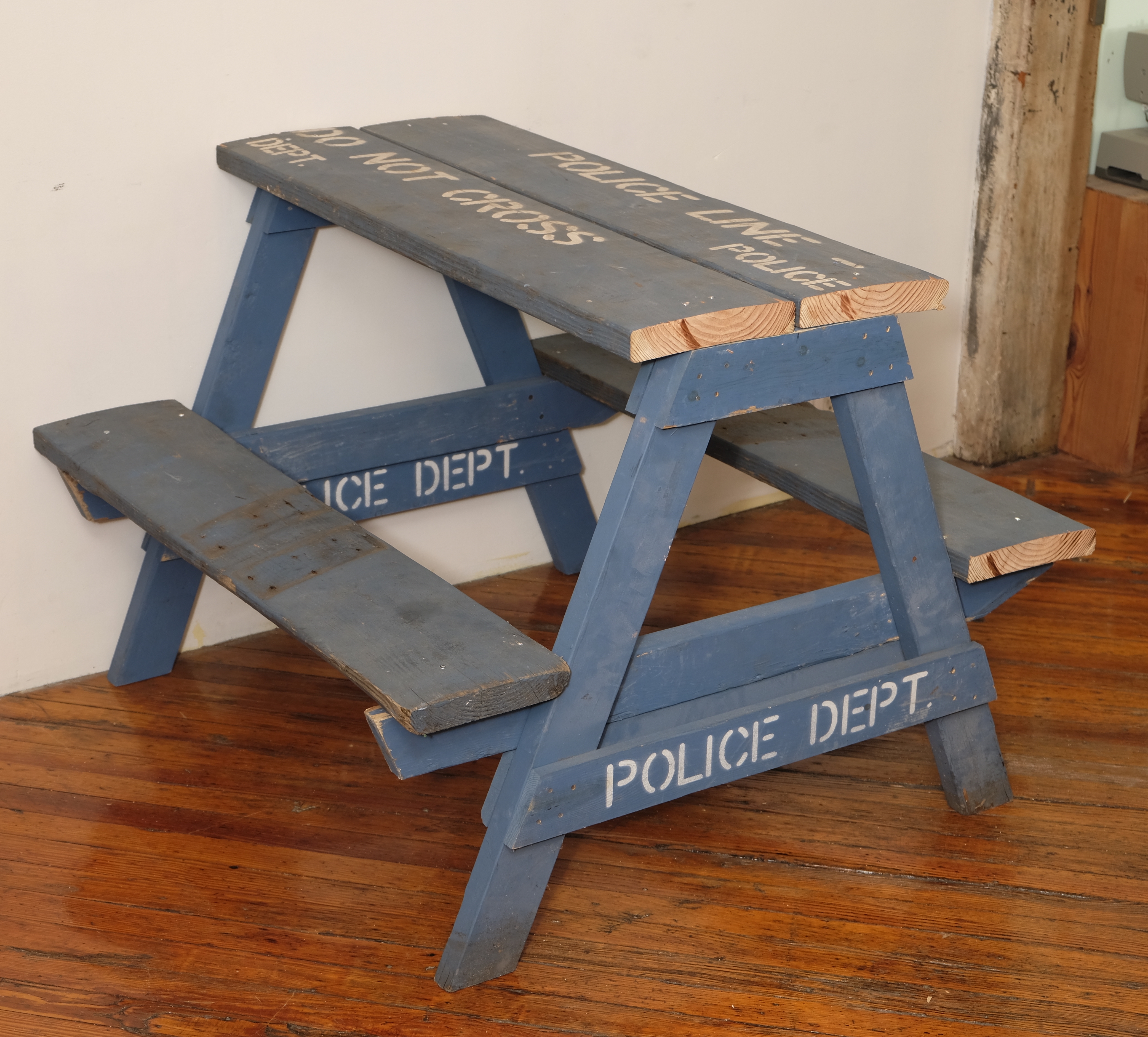
This has led to me to produce some work closer to the realm of art. I funneled the DIY ethos and some thoughts about public space into a police barrier picnic table. (I draw a lot of inspiration here from Tom Sachs, Lozano-Hemmer, and Chris Burden.) It’s a remarkably simple subversion of a symbol of containment into a, if not universal, at the very least American symbol of welcoming. So simple in fact, that an instruction manual would consist of three steps: (1) acquire barrier, (2) cut 5 places, (3) screw together. The subversion is largely inspired by Ivan Illich’s thoughts on the commons; spaces where the implicit societal norms give leeway for varieties of daily life, establishing a homeostasis independent of systematized rules. It was a response to noticing the absence of public space in New York–not a park with some benches, but spaces for living, with tables for eating and chatting, rain-cover, informal commerce, and kids playing. Ironically, the way to establish such a space in New York is to plant two police barriers on each side of a street and call it a fair. The DIY ethos, of taking a simple action that imbues one with a sense of agency to shape one’s environment, hopefully shines through. In the upcoming year, I hope to install the picnic table in situ, establishing a public space by merely suggesting that this is a space to be.
Another piece that, despite being an utter failure, has shined light onto my process was a computational poem I submitted to Taper, a tiny computational art publication out of MIT’s Comparative Media Studies department. Rayleigh is a simulation of a sunset built under the formal constraints of no external media and 2kb of source code. It was the first time I did a project with music. I hoped to bring the durée of sunset watching to the internet, a context where one is used to timelines, suggested next videos, and schizophrenic link-clicking–in sum, where one’s attention is under attack and patience is not rewarded. I was excited that the editors enjoyed the piece, but I regard it as a failure as most viewers leave simply annoyed. My job as artist, the alignment of form and content, was not carried through. However, watching my mother experience Rayleigh (compelled to finish it only because I am her son), and hearing her requests for a timer, her initial confusion as to whether or not the colors were changing, her assumption that the audio was recorded, and then the satisfaction at the moment of resonance make me think there’s something in there that works.
This points to a theory of art that’s been brewing in my mind ever since I read Pynchon’s Crying of Lot 49 in an English class during my senior year of college. It seems that some truths cannot be simply stated. Either they are inexpressible, or their expression is so banal, that nothing is communicated. “You only have a few good friends in a life” is the example I often point to, as it seems like a clarity that many have reached during the pandemic. However, simply saying so will often return aggressive claims: “I have tons of friends!” To communicate this truth requires not a deductive composition of distinct facts into a explanatory system, but a Gestalt that emerges from the accretion of layers of experience. It’s a form of inductive knowledge. (This is how I read Pynchon’s incessant layering of references, in contrast to an allegorical approach to writing.) Communication is not about giving the correct premises and avoiding bias in reasoning. It requires a careful hermeneutical play with one’s audience to construct an effective experience which makes some conclusion obvious. Rudolf Arnheim’s notions of formal parsimony and isomorphism help elucidate that great art only reaches for complexity to match the shape of the truth its trying to represent. Art, minimally, communicates the otherwise ineffable.
This year has brought the clarity that I aspire to be an artist. Nowadays, the entirety of Brooklyn seems to think they’re artists, but art is not about making pretty things (ornament), nor fun things (entertainment), nor liking to paint, draw, or sculpt (craft). I’ll refrain from adopting the term until I die. However, striving to live a beautiful life, where these truths emerge from experience, and then attempting, in the only way possible, to articulate them to others, seems like the only response to my otherwise overwhelming misanthropy. In Journey into the End of the Night, Céline urges us to “hurry hurry, cram yourself full of dreams to carry you through the life that’s waiting for you outside, when you leave here, to help you last a few days more in that nightmare of people and things. Among the dreams, choose the ones most likely to warm your soul.” Art warms my soul, hopefully I can warm yours.
I leave you with two hopefully reconcilable quotes. The first from Henry Miller’s Tropic of Cancer, a sentiment echoed by Dave Eggers in a Harvard Advocate interview, about not forgetting to escape the confines of one’s mind: “I go forth to fatten myself.” The second, an aspirational verse of Paul Valéry, stolen from Calvino’s memo on lightness: “Il faut être léger comme l’oiseau, et non comme la plume.” One should be light like a bird, not like a feather.
Cristóbal
Later on in the year, I helped XY remove some roofing from his garage. I was standing on a ladder to remove some of the joists, when I levered a crowbar between a pair and put all of my weight onto it. As soon as my weight left the ladder, the joist snapped, torquing the metal bar straight into the back of my head. I paid five staples for that one.↩
Inspired by both of these “cookbooks” for creation, I can’t help but wonder what effect a “How to Build Your Own Media Environments” could have on a generation’s relationship to information and computational literacy.↩